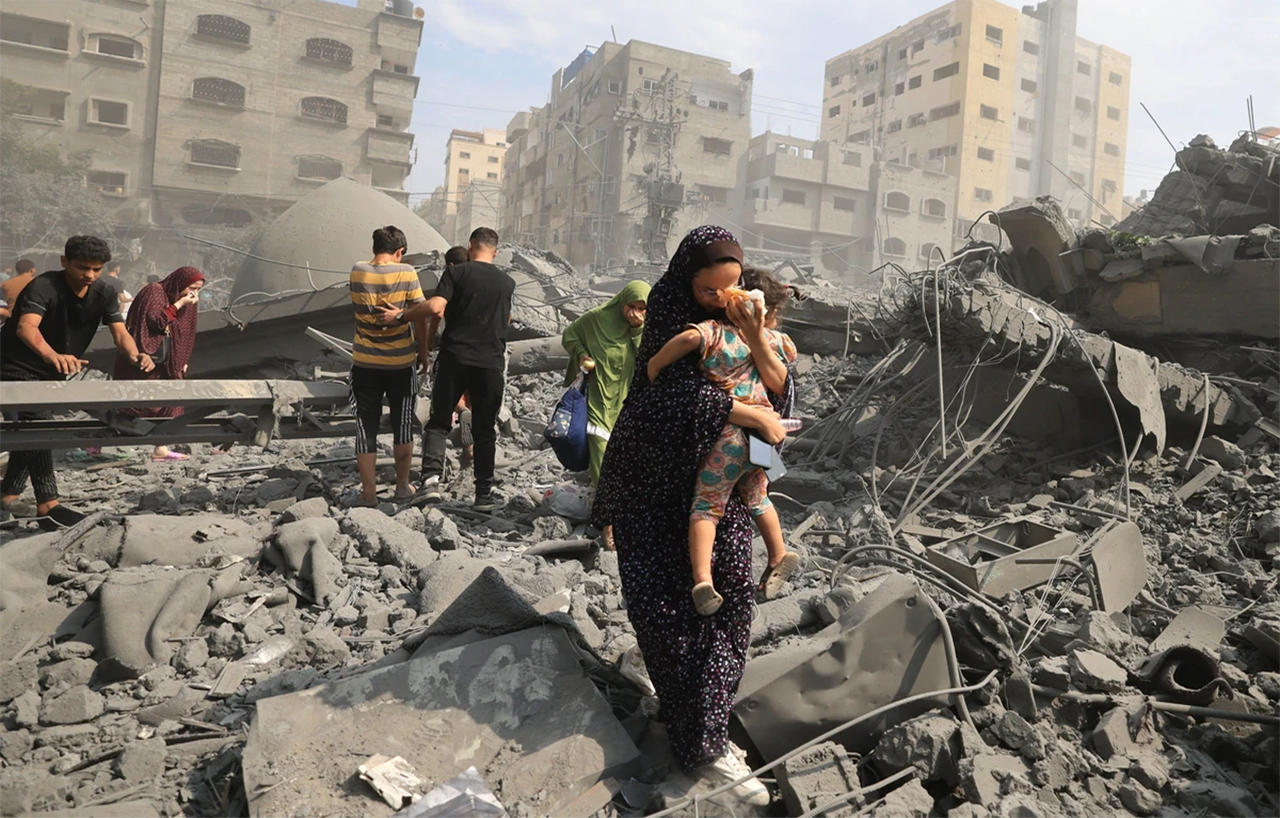By Groundxero
The World Health Organization, UN Relief and Works Agency for the Palestine Refugees in the Near East, the UN Populations Fund and Unicef have put out a joint statement on the plight women and newborns in Gaza are facing amid Israel’s deadly siege.
The UN agencies said that bombardments, damaged or non-functioning health facilities, massive levels of displacement, collapsing water and electricity supplies as well as restricted access to food and medicines, are severely disrupting maternal, newborn, and child health services.
The UN agencies said that as of 3 November, according to Hamas-run Ministry of Health data, 2,326 women and 3,760 children have been killed in the Gaza strip, representing 67% of all casualties, while thousands more have been injured. This means that 420 children are killed or injured every day, some of them only a few months old.
The statement said that there are an estimated 50,000 pregnant women in Gaza, with more than 180 giving birth every day. The agencies pointed out that with 14 hospitals and 45 primary health care centres closed due to continuous Israeli airstrikes, many women in Gaza are having to give birth in shelters, in their homes, in the streets amid rubble, or in overwhelmed healthcare facilities, where sanitation is worsening, and the risk of infection and medical complications is on the rise. Health facilities are also coming under fire – on 1 November Al Hilo Hospital, a crucial maternity hospital, was shelled.
The statement expressed concern that the lives of newborns in the enclave also hang by a thread. It warned that if hospitals in Gaza run out of fuel, the lives of an estimated 130 premature babies who rely on neonatal and intensive care services will be threatened, as incubators and other medical equipment will no longer function.
The statement stated that humanitarian agencies urgently need sustained and safe access to bring more medicines, food, water and fuel into Gaza. It pointed out that no fuel has come into the Gaza Strip since 7 October.
The UN agencies once again called for an immediate humanitarian pause to war to alleviate the suffering and prevent a desperate situation from becoming catastrophic.
Earlier on 31st October, UNICEF Spokesperson James Elder in a press briefing in Geneva had said, “Gaza has become a graveyard for thousands of children” and if there is no ceasefire, no water, no medicine, and no release of abducted children then “we hurtle towards even greater horrors afflicting innocent children.”
On Wednesday, the US used its veto at the UN security council to block a resolution calling for Israel to allow humanitarian corridors into the Gaza Strip, a pause in the fighting and the lifting of an order for civilians to leave the north of the besieged territory.
The text of the resolution drafted by Brazil, and supported by 12 of the 15 members of the security council, contained criticism of “heinous terrorist crimes by Hamas” and made no direct reference to Israel. In an attempt to win US support, the draft resolution did not explicitly call for a ceasefire, instead referring to a “humanitarian pause”.
But the US vetoed even the call for ‘humanitarian pause’ and corridors into Gaza, with its UN ambassador Linda Thomas-Greenfield saying that the text was unacceptable as it did not mention Israel’s “right to self-defence”, which under the current circumstances means the right to kill civilians, bombard refugee camps and hospitals, deny access to food, water and medicine to millions of Palestinians under military siege in Gaza.
In the face of mounting public outcry, both within US and worldwide, to the unfolding horrors of Israeli war crimes and the US complicity in the genocide of civilians in Gaza and other occupied Palestine territories, coupled with the fear of the war spreading to neighbouring Arab countries, the US secretary of state, Antony Blinken, visited Israel on Friday to urge the Israeli prime minister to temporarily stop its military offensive to allow aid into Gaza. But Benjamin Netanyahu, rejected even a “pause” in the genocidal offensive, saying that Israel will continue its war in Gaza “with full force” and will refuse any temporary ceasefire that does not include the release of more than 240 hostages held by Hamas.
On the same day, Israeli forces bombed an ambulance at the gate of al-Shifa Hospital in Gaza, killing at least 15 people and injuring 60 others. A spokesman for the health ministry in Gaza said that a convoy of ambulances was transporting critically wounded patients from al-Shifa Hospital to the Rafah border crossing with Egypt when it was targeted in an Israeli attack. A statement from the Israel Defense Forces (IDF) justified the airstrike on ambulance, saying :
A Hamas terrorist cell was identified using an ambulance. In response, an IDF aircraft struck and neutralized the Hamas terrorists, who were operating within the ambulance.
We emphasize that this area in Gaza is a war zone. Civilians are repeatedly called upon to evacuate southward for their own safety.
But, thousands fleeing to the South to escape death are also being killed in Israeli airstrikes. On the same day, in a separate attack, children were among at least 14 Palestinians killed while fleeing to south Gaza. A video being shared on social media and verified by Reuters on Friday showed the bodies of at least seven people lying apparently dead on a road running south of Gaza City, which is currently under siege by Israeli forces.
The Palestinians living in occupied territories outside Gaza are also not spared. At least nine Palestinians were killed in overnight Israeli raids across the occupied West Bank, including five in Jenin.
According to the Hamas-run health ministry, Israeli strikes on Gaza have so far killed at least 9,227 Palestinians, including 3,826 children. The Israeli offensive followed attacks launched by Hamas into Israel on 7 October which killed 1,400 people.

